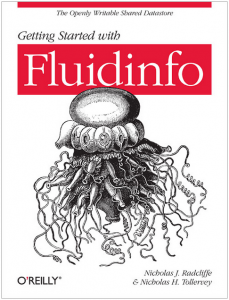There are about 50 million Tumblr blogs, so there’s a reasonable chance you or some of your friends are use Tumblr. It’s now possible to import Tumblr data into Fluidinfo with just a couple of clicks. If you follow someone on Fluidinfo who’s done that, and you’re a Chrome user, we have some great news for you. Have a look at this:
If you install the Fluidinfo Chrome extension and follow a few people, as shown in the video, you’ll soon be getting little pop-ups telling you when you stumble across things the people you follow have mentioned on Tumblr. Note that you don’t have to be a Tumblr user to do this, you can just follow some people who are.
Fluidinfo is now doing imports of all URLs, #hashtags, and @names that people mention on Twitter and on Tumblr and tying it all together. The chrome browser extension surfaces that information for you as you browse. We have a new Firefox extension that’s about to go into beta, and imports of Delicious and Diigo are in the pipeline, so stay tuned!
